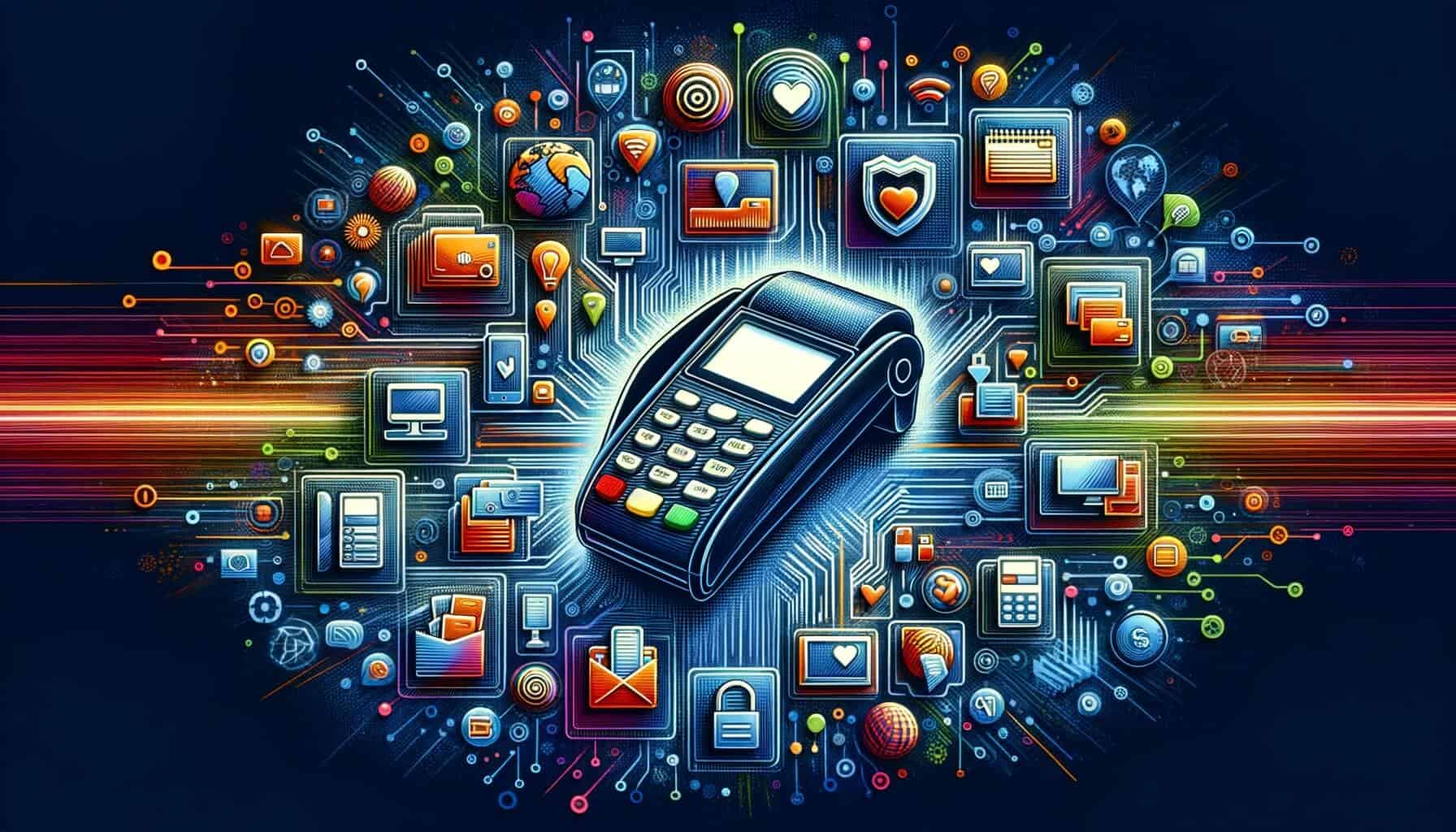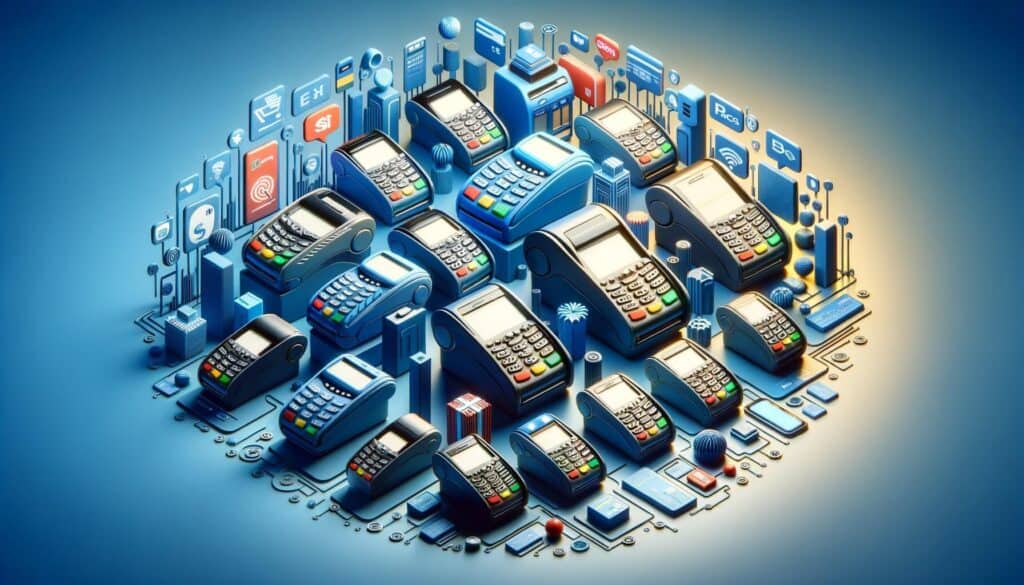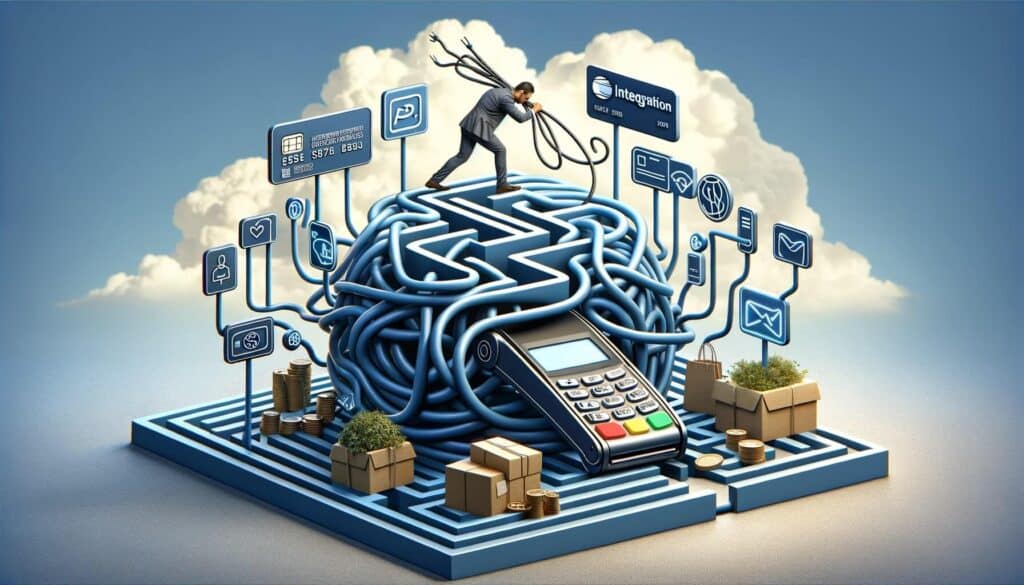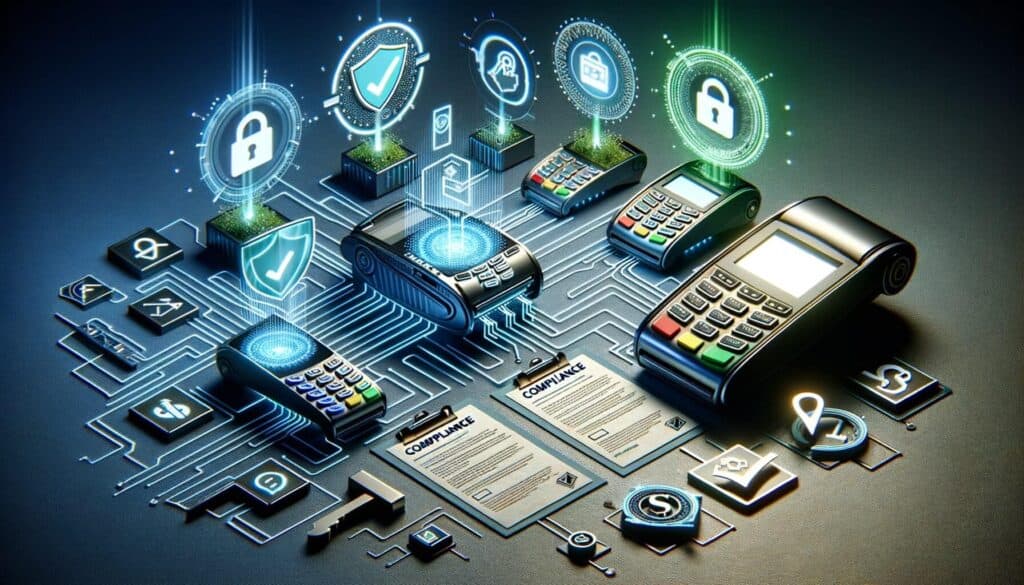
By Catharine Proctor February 23, 2025
In today’s digital age, businesses are constantly seeking ways to streamline their operations and enhance customer experience. One crucial aspect of any business is the ability to accept payments seamlessly and securely. Integrating payment terminals with your existing merchant services is a game-changer in this regard.
This comprehensive article will delve into the benefits of integrating payment terminals, how to choose the right terminal, step-by-step guide to integration, common challenges and solutions, enhancing security and compliance, streamlining operations, improving efficiency, maximizing customer experience, and frequently asked questions.
Benefits of Integrating Payment Terminals with Your Merchant Services

1. Enhanced Payment Processing: Integrating payment terminals with your merchant services allows for faster and more efficient payment processing. With a seamless integration, transactions can be completed in a matter of seconds, reducing wait times for customers and increasing overall satisfaction.
2. Improved Accuracy: Manual entry of payment information can lead to errors and discrepancies. By integrating payment terminals with your merchant services, you eliminate the need for manual data entry, reducing the risk of human error and ensuring accurate transaction records.
3. Increased Security: Payment security is a top concern for businesses and customers alike. Integrated payment terminals offer advanced security features such as encryption and tokenization, protecting sensitive customer data and reducing the risk of fraud.
4. Streamlined Reporting and Analytics: Integrating payment terminals with your merchant services provides access to comprehensive reporting and analytics. This data can be used to gain insights into customer behavior, track sales trends, and make informed business decisions.
5. Seamless Omni-Channel Experience: In today’s multi-channel retail environment, customers expect a seamless experience across various touchpoints. Integrating payment terminals allows for a consistent and unified experience, whether customers are shopping online, in-store, or through mobile devices.
Choosing the Right Payment Terminal for Integration

When it comes to choosing the right payment terminal for integration, several factors need to be considered. Here are some key considerations:
1. Compatibility: Ensure that the payment terminal you choose is compatible with your existing merchant services. Check with your payment processor or service provider to confirm compatibility before making a purchase.
2. Connectivity Options: Consider the connectivity options available for the payment terminal. Depending on your business needs, you may opt for terminals that support Ethernet, Wi-Fi, or Bluetooth connectivity.
3. Functionality: Evaluate the features and functionality offered by different payment terminals. Look for features such as contactless payments, EMV chip card acceptance, and NFC capabilities to future-proof your business.
4. Scalability: Consider the scalability of the payment terminal. Will it be able to handle your business’s growth and evolving needs? Look for terminals that can accommodate increased transaction volumes and support additional features as your business expands.
5. Cost: Compare the costs associated with different payment terminals, including upfront costs, ongoing fees, and maintenance expenses. Consider the return on investment and choose a terminal that aligns with your budget and business goals.
Step-by-Step Guide to Integrating Payment Terminals with Your Merchant Services
Integrating payment terminals with your merchant services may seem like a complex process, but with the right approach, it can be seamless. Here is a step-by-step guide to help you through the integration process:
1. Assess Your Business Needs: Start by assessing your business needs and identifying the specific requirements for integrating payment terminals. Consider factors such as transaction volume, types of payments accepted, and desired features.
2. Research Payment Processors: Research and compare different payment processors or service providers. Look for providers that offer seamless integration options, robust security features, and excellent customer support.
3. Choose a Compatible Payment Terminal: Select a payment terminal that is compatible with your chosen payment processor or service provider. Ensure that the terminal meets your business requirements and supports the desired features.
4. Set Up Your Merchant Account: If you don’t already have a merchant account, set one up with your chosen payment processor. Provide the necessary information and complete any required paperwork or verification processes.
5. Configure the Payment Terminal: Follow the manufacturer’s instructions to configure the payment terminal. This may involve connecting the terminal to your network, setting up Wi-Fi or Bluetooth connectivity, and entering any necessary settings or credentials.
6. Test the Integration: Before going live, thoroughly test the integration between your payment terminal and merchant services. Process test transactions, verify that the data is accurately transmitted, and ensure that all features and functionalities are working as expected.
7. Train Your Staff: Provide comprehensive training to your staff on how to use the integrated payment terminal. Ensure they understand the features, functionalities, and troubleshooting procedures to handle any issues that may arise during transactions.
8. Go Live: Once you are confident in the integration and your staff’s readiness, go live with the integrated payment terminal. Monitor transactions closely during the initial period to address any teething issues promptly.
9. Monitor and Optimize: Continuously monitor the performance of your integrated payment terminal and merchant services. Analyze transaction data, identify areas for improvement, and optimize the integration to enhance efficiency and customer experience.
Common Challenges and Solutions in Integrating Payment Terminals

While integrating payment terminals with your merchant services offers numerous benefits, it can also present some challenges. Here are some common challenges and their solutions:
1. Technical Compatibility Issues: Incompatibility between the payment terminal and merchant services can hinder integration. To overcome this challenge, ensure that you choose a payment terminal that is compatible with your chosen payment processor or service provider.
2. Connectivity Problems: Connectivity issues can disrupt payment processing and lead to delays or failed transactions. To mitigate this challenge, ensure that your payment terminal has reliable connectivity options and consider backup solutions such as cellular connectivity or secondary internet connections.
3. Training and Adoption: Training your staff on how to use the integrated payment terminal effectively is crucial. Lack of proper training can lead to errors and inefficiencies. Invest in comprehensive training programs and provide ongoing support to ensure smooth adoption.
4. Security Concerns: Security is a top priority when it comes to payment processing. Ensure that your integrated payment terminal meets industry security standards and complies with regulations such as PCI DSS. Regularly update software and firmware to address any security vulnerabilities.
5. Technical Support: In case of any technical issues or challenges, having access to reliable technical support is essential. Choose a payment processor or service provider that offers prompt and efficient technical support to address any integration-related problems.
Enhancing Security and Compliance with Integrated Payment Terminals

Security and compliance are critical considerations when integrating payment terminals with your merchant services. Here are some ways integrated payment terminals enhance security and compliance:
1. Encryption: Integrated payment terminals use encryption technology to protect sensitive customer data during transmission. This ensures that payment information remains secure and reduces the risk of data breaches.
2. Tokenization: Tokenization is another security measure used by integrated payment terminals. It replaces sensitive payment data with unique tokens, making it virtually impossible for hackers to access and misuse the information.
3. EMV Chip Card Acceptance: Integrated payment terminals support EMV chip card acceptance, which provides an added layer of security compared to traditional magnetic stripe cards. EMV chip cards generate unique transaction codes for each transaction, reducing the risk of counterfeit fraud.
4. PCI DSS Compliance: Payment Card Industry Data Security Standard (PCI DSS) compliance is essential for businesses that handle cardholder data. Integrated payment terminals are designed to meet PCI DSS requirements, ensuring that your business remains compliant and avoids penalties.
5. Fraud Detection and Prevention: Integrated payment terminals often come equipped with advanced fraud detection and prevention features. These features analyze transaction patterns, identify suspicious activities, and help prevent fraudulent transactions.
Streamlining Operations and Improving Efficiency with Integrated Payment Terminals
Integrating payment terminals with your merchant services can significantly streamline operations and improve efficiency. Here’s how:
1. Faster Transaction Processing: Integrated payment terminals enable faster transaction processing, reducing wait times for customers and improving overall efficiency. This is particularly beneficial during peak hours or busy periods when speed is crucial.
2. Inventory Management: Integrated payment terminals can be linked to your inventory management system, allowing for real-time updates on stock levels. This ensures accurate inventory tracking, reduces the risk of overselling, and improves overall inventory management.
3. Automated Reconciliation: Manual reconciliation of payments can be time-consuming and prone to errors. Integrated payment terminals automate the reconciliation process by syncing transaction data with your accounting or ERP system, saving time and improving accuracy.
4. Customer Relationship Management (CRM) Integration: Integrated payment terminals can be integrated with your CRM system, allowing for seamless customer data synchronization. This enables personalized customer experiences, targeted marketing campaigns, and improved customer relationship management.
5. Streamlined Reporting and Analytics: Integrated payment terminals provide access to comprehensive reporting and analytics. This data can be used to gain insights into sales trends, customer behavior, and other key metrics, enabling data-driven decision-making and business optimization.
Maximizing Customer Experience through Integrated Payment Terminals
Integrating payment terminals with your merchant services has a direct impact on customer experience. Here’s how it can maximize customer satisfaction:
1. Convenience and Speed: Integrated payment terminals offer a seamless and convenient payment experience for customers. With faster transaction processing and various payment options, customers can complete their purchases quickly and easily.
2. Contactless Payments: Integrated payment terminals support contactless payment options such as mobile wallets and NFC-enabled cards. This allows customers to make payments without physical contact, enhancing convenience and reducing the risk of germ transmission.
3. Personalization: Integrated payment terminals can be linked to customer data, enabling personalized experiences. For example, if a customer has a loyalty program, the terminal can automatically apply discounts or rewards, creating a personalized and rewarding experience.
4. Reduced Friction: Integrated payment terminals eliminate the need for manual data entry, reducing friction during the payment process. This leads to a smoother and more enjoyable customer experience, increasing customer satisfaction and loyalty.
5. Unified Omni-Channel Experience: Integrated payment terminals enable a unified omni-channel experience. Customers can seamlessly transition between online and offline channels, with their payment information and preferences synced across all touchpoints.
Frequently Asked Questions (FAQs)
Q1. What is the difference between a payment terminal and a payment gateway?
Answer: A payment terminal is a physical device used to accept payments, while a payment gateway is a software application that facilitates the transfer of payment information between the merchant, customer, and payment processor.
Q2. Can I integrate my existing payment terminal with new merchant services?
Answer: In some cases, it may be possible to integrate your existing payment terminal with new merchant services. However, compatibility and technical requirements need to be considered. Consult with your payment processor or service provider for guidance.
Q3. How long does it take to integrate payment terminals with merchant services?
Answer: The time required for integration can vary depending on factors such as the complexity of your business requirements and the chosen payment terminal and service provider. It is best to consult with your payment processor or service provider for an accurate timeline.
Q4. What security measures should I look for in an integrated payment terminal?
Answer: Look for integrated payment terminals that offer encryption, tokenization, EMV chip card acceptance, and compliance with PCI DSS. These security measures help protect customer data and reduce the risk of fraud.
Q5. Can integrated payment terminals help with inventory management?
Answer: Yes, integrated payment terminals can be linked to your inventory management system, allowing for real-time updates on stock levels. This helps streamline inventory management and reduces the risk of overselling.
Conclusion
Integrating payment terminals with your existing merchant services offers numerous benefits, including enhanced payment processing, improved accuracy, increased security, streamlined reporting and analytics, and a seamless omni-channel experience.
By choosing the right payment terminal, following a step-by-step integration process, addressing common challenges, and focusing on security and compliance, businesses can streamline operations, improve efficiency, and maximize customer experience. With the ever-increasing importance of digital payments, integrating payment terminals is a crucial step for businesses looking to stay competitive and meet customer expectations in today’s fast-paced digital landscape.